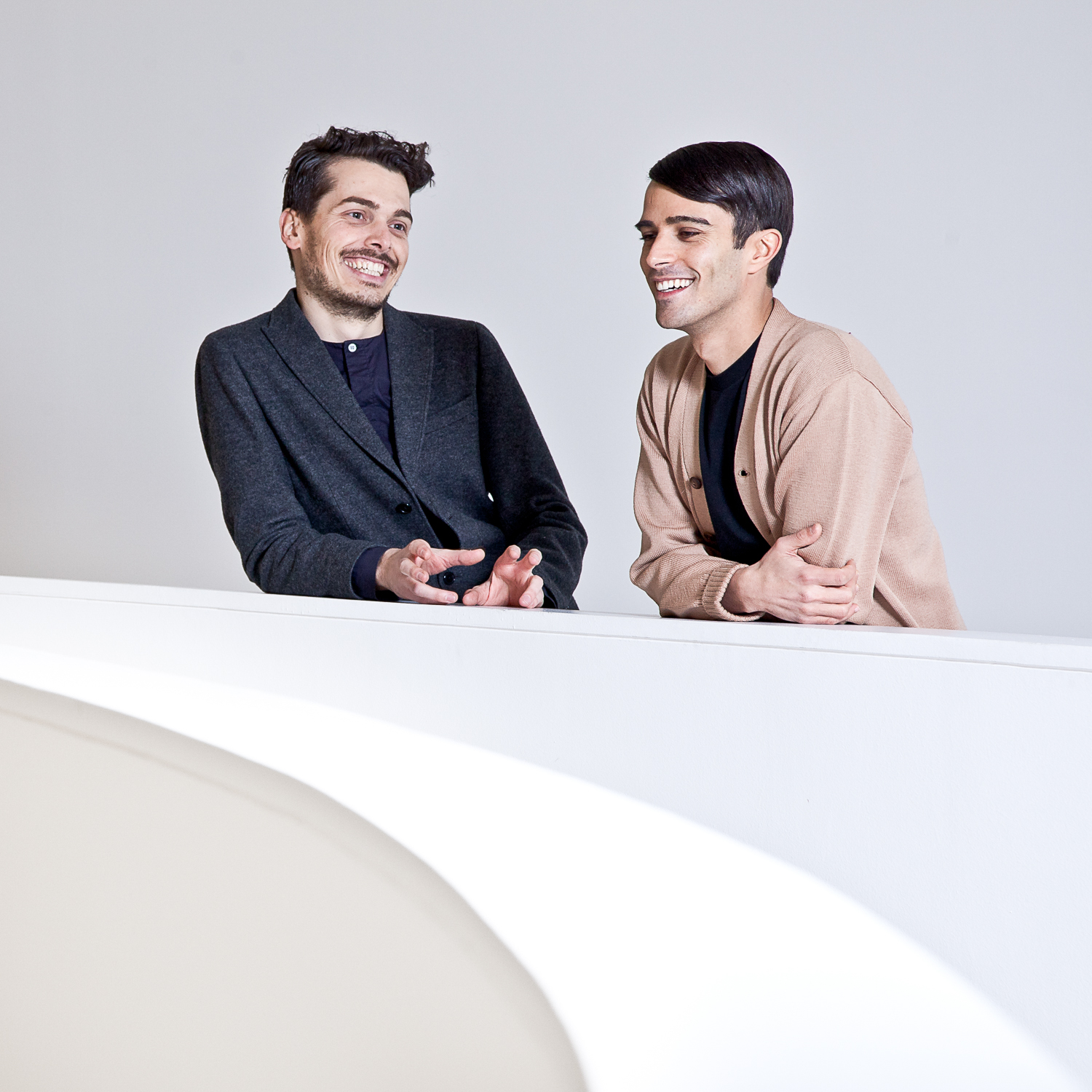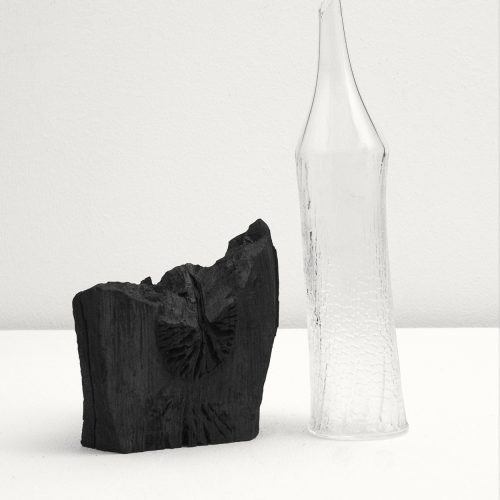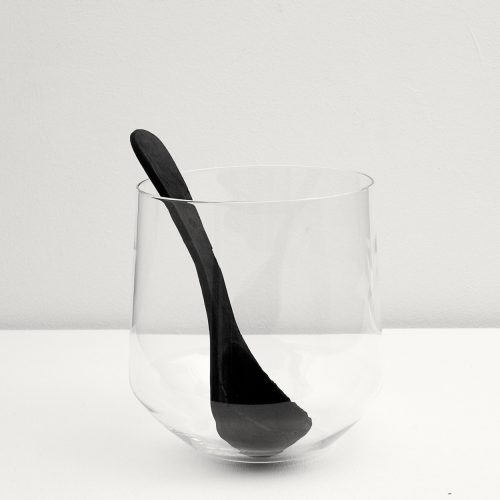缓燃
Charcoal
2012
形式幻想工作室与Ms. Doris Wicki携手共同设计了这一项目。Doris是最后一批致力于通过木材缓燃(5至7天)的方法,存续制炭传统的人。这种活动根植于瑞士历史之中,当时炭作为一种冶金燃料,在经济上具有重要作用。但到了20世纪,由于滥伐森林和二氧化碳的排放,这种制炭方法被禁止了。
尽管带有负面的联想,一些制炭活动至今仍在进行。事实上,随着时间的流逝,制炭这一复杂精细的生产过程已经逐渐转变成了一种具有怀旧情怀的“即兴事物”,在民俗节庆活动中有所保留。在世界其他地方,烧炭仍然存在。比如在刚果,烧制木炭已经对维龙加国家公园产生了威胁,这是该国最大的自然保护区。
木炭具有二重性,一方面它有着反乌托邦的隐喻,造成环境污染与破坏,而同时炭在卫生保健和水净化中又有着益处,二者的紧张关系激发了形式幻想工作室的创作灵感。历史学家发现,有证据可以表明古埃及人曾用木炭进行过滤,而这一方法在日本仍普遍存在,人们用枝炭净化自来水。
通过与玻璃吹制工和木材雕刻工的合作,设计师创造了一组装有缓燃制作的木炭的玻璃“过滤器”。在与Doris于苏黎世周边的一个森林共度的几天中,这些定制的木制器具被燃烧并炭化,而这一过程则被摄影师路易莎·赞扎尼记录了下来。
For this project, Studio Formafantasma was paired with Ms. Doris Wicki, one of the last people in Europe dedicated to the tradition of producing charcoal by the slow burning (5-7 days) of wood. The activity, that is deeply rooted in Swiss tradition, was economically important when charcoal was produced as a metallurgical fuel. Itwas banned in the 20th century due to deforestation and CO2 emissions.
Despite the negative connotations, a few charcoal burners are still operating today. The passing of time has in fact transformed this elaborate production process into a nostalgic ‘happening’, often relegated to festive folk events. In other parts of the world charcoal burning is still a reality. In the Congo, for example, charcoal burning threatens the Virunga National Park, one of the nation’s biggest natural reserves. Studio Formafantasma drew inspiration from the tension between the dystopian connotation of charcoal, causing pollution and destruction, and its beneficial use in healthcare and water purification. Historians have found evidence that carbon filtration was used by the ancient Egyptians, while in Japan it is still common today to use a few simple charcoal branches to purify tap water. In collaboration with a glass blower and wood carver, the designers produced a series of jars and wooden ‘filters’. Over the course of a few days spent with Ms. Wicki and photographer Luisa Zanzani in a forest in the surroundings of Zurich, the customized wooden pieces were left burning and deteriorating while the process was documented.
设计师简介 About The Designer

Studio Formafantasma
The Netherlands/荷兰
Andrea Trimarchi
*1983
Simone Farresin
*1980
www.formafantasma.com
设计师Andrea Trimarchi(1983)和Simone Farresin(1980)的意大利设计双人组是阿姆斯特丹的形式幻想工作室的创始人。两人于2009年毕业于埃因霍温设计学院“身份/室内/工业设计专业”(Identity/ Interior / Industrial),并在那里培养了他们对产品设计的兴趣。
从那时起,形式幻想工作室就通过材料实验设计了一系列清晰简洁的产品。他们的项目探讨的议题包括传统和地方文化之间的关系、实现可持续性的批判性方法,以及物品作为文化管道的重要性。
他们把自己看作工艺、行业、产品和使用者之间的桥梁,对于构建以研究为基础的实践和更广泛的设计行业之间的纽带关系具有浓厚兴趣。二人在许多教育机构举办讲座和工作坊活动。他们目前正在埃因霍温设计学院的“幸福” (Well Being) 部门和情景化设计部门授课。
Andrea Trimarchi (1983) and Simone Farresin (1980) are Studio Formafantasma, an Italian design duo based in Amsterdam, The Netherlands. Their interest in product design developed on their IM master course at Design Academy Eindhoven, where they graduated in 2009. Since then, Studio Formafantasma have developed a coherent body of work characterized by experimental material research, exploring issues such as the relationship between tradition and local culture, critical approaches to sustainability and the significance of objects as cultural conduits.
In perceiving their role as a bridge between craft, industry, object and user, Studio Formafantasma are interested in forging links between their research-based practice and a wider design industry. The designers are lecturing and heading workshops in various educational institutions. At the moment they are teaching at the Department ‘Well Being’ of the Design Academy Eindhoven.

